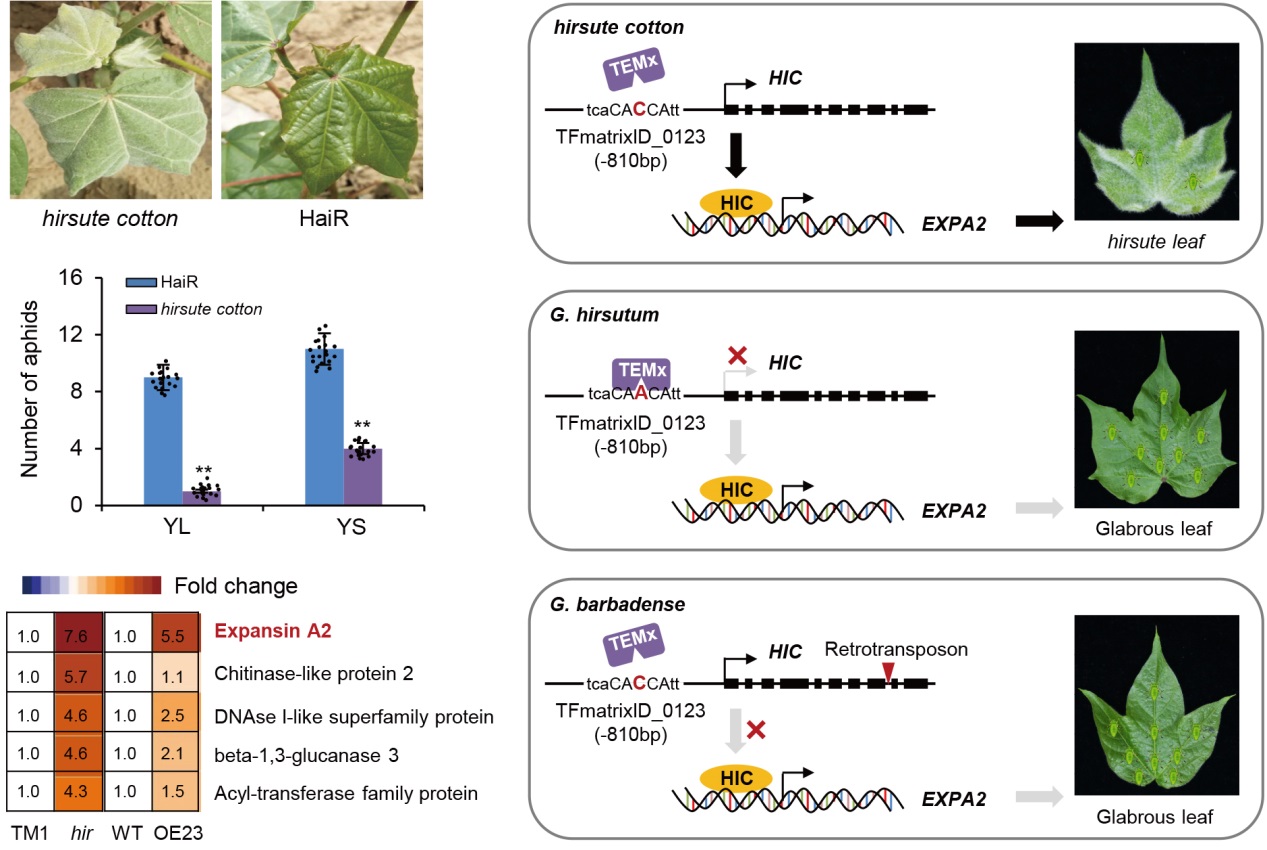Recently, Dr. Chengzhen Liang's group at the Biotechnology Research Institute of the Chinese Academy of Agricultural Sciences made a significant breakthrough in understanding how cotton plants defend themselves against pests such as aphids. They identified and characterized a gene called HIC, which plays a crucial role in increasing the density of cotton trichomes—tiny hair-like structures on the plant's surface that deter aphids. The study, published in The Plant Journal, reveals that the HIC gene acts as a switch to initiate trichome production. When overexpressed, HIC leads to a substantial increase in trichome density, enhancing the plant's resistance to aphids. Conversely, reducing HIC expression results in fewer trichomes, making the plant more vulnerable to pests..
The team discovered a specific genetic variant in the HIC gene promoter that boosts its activity, leading to more trichomes in certain cotton varieties. This variant is present in both Gossypium barbadense and a type of cotton known for its high trichome density. However, a retrotransposon insertion in G. barbadense disrupts HIC function, affecting trichome production. Further analysis showed that HIC directly targets the EXPANSIN A2 gene, which is involved in cell wall development, crucial for trichome formation. This discovery not only advances our understanding of plant biology but also opens new avenues for developing cotton varieties with natural pest resistance through selective breeding..
This work was supported by the National Key Research and Development Program of China [2023YFF1000103], Biological Breeding-Major Projects [2023ZD04039-03-3], National Natural Science Foundation of China [32072115], and the Agricultural Science and Technology Innovation Program of CAAS.

|